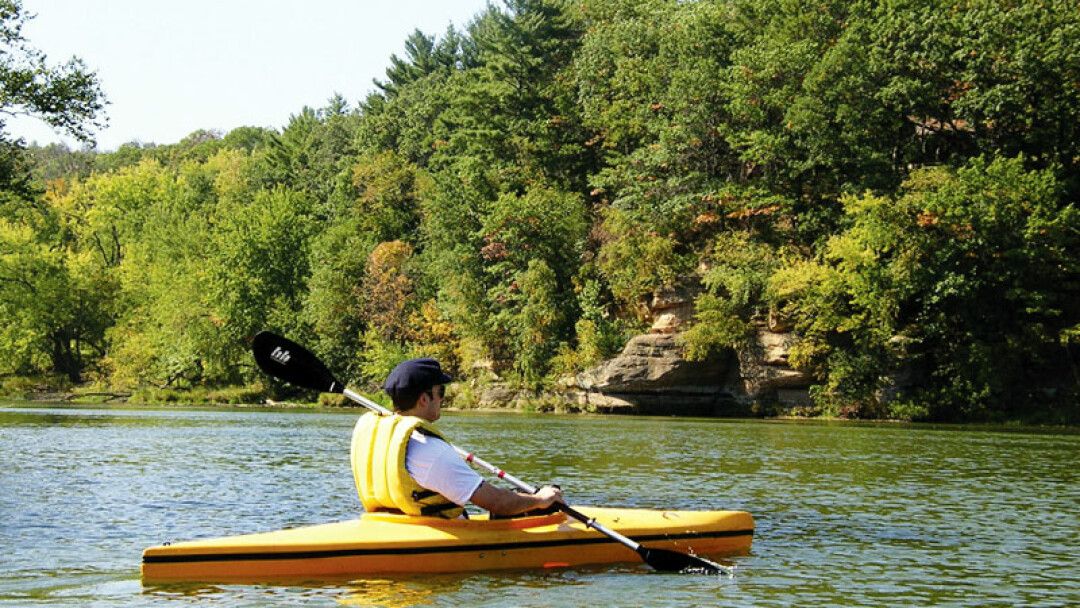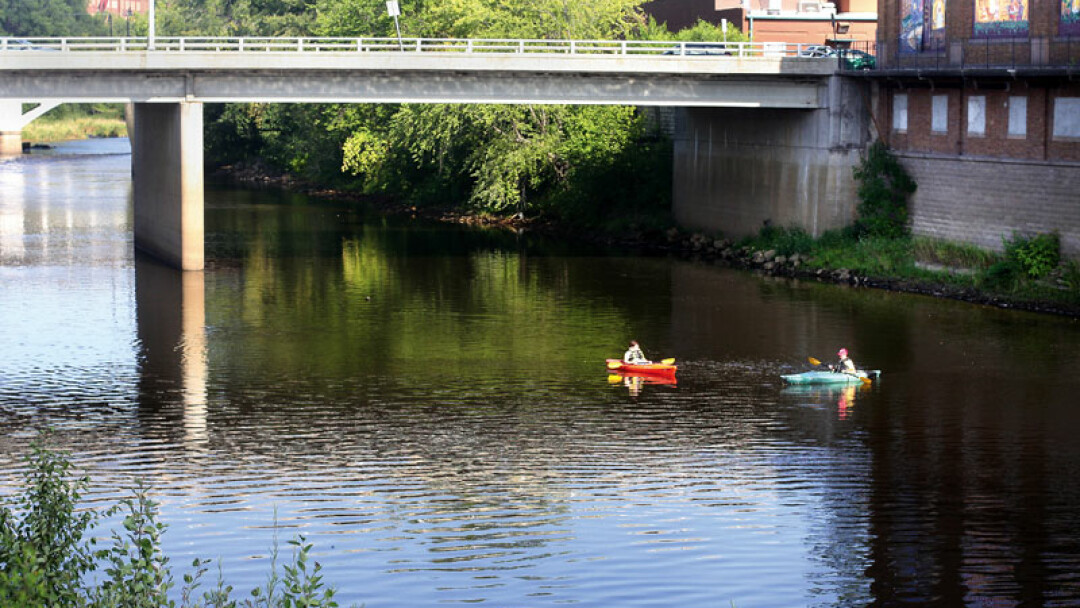A Paddler’s Perspective
an interview with Peter Strand, president of pure water paddlers

Pure Water Paddlers is a Chippewa Valley based paddling club for users of canoes, kayaks, or any paddle craft – beginners to experts. They host weekly social paddles, safety training and skills classes, weekend getaways, and extended trips. Learn more about the club at: www.purewaterpaddlers.com
How do you and your group currently use the Eau Claire and Chippewa Rivers? Where do you put in, take out, and how often do you paddle in and around downtown Eau Claire?
Our group has frequent paddles on the Chippewa River throughout the summer. Primarily, we paddle within the impoundments of Dells Pond, Timber Terrace, and Lake Wissota, but we also have down river trips south out of the city. The Eau Claire is a bit harder to paddle due to water levels and kayak access. I normally only go down the Eau Claire in early spring. As a club we normally try to paddle where it is easy to launch without a long way to carry the boats.
Do the river features of downtown Eau Claire lend themselves towards the makings of a great paddle town? What would it take to get us there?
We are very lucky to live in a place with great water resources including the rivers in the heart of our community. A canoe and kayak launch on the Eau Claire River would help.

What is your personal opinion toward urban development on rivers? What are the ramifications of these developments from a paddler’s perspective?
Development and land use along rivers is a tricky issue that should not be taken lightly. It can have both positive and negative impacts. Development that highlights a river can bring much-needed attention to issues of water quality and preservation. It can bring about a rediscovery about a city’s heritage; many of Wisconsin cities have a history tied directly to a river. However, for too long our rivers have been misused – choked with pollution from industry, agriculture, urban runoff, and sewage. When you think about urban rivers like the channelized L.A. River or Milwaukee’s Kinnickinnic River, the river has become a detriment to the community. These rivers have been replaced by a concrete encapsulated open storm sewer. A dangerous environment for local residents and no place you would want to paddle.
However, a river’s re-development or revitalization can get citizens thinking about the river and what it means to the community. If carefully planned, rivers can offer urban residents a connection to their environment, recreational opportunities (both on and off the water), benefits for public health, and economic growth.
A river’s re-development or revitalization can get citizens thinking about the river and what it means to the community. If carefully planned, rivers can offer urban residents a connection to their environment, recreational opportunities (both on and off the water), benefits for public health, and economic growth.
– Peter Strand, president, Pure Water Paddlers
I personally think water quality has to be a topic for all river redevelopment, and that has to include a watershed-level understanding, as well as a particular project like the current Confluence Project. Protecting the river should always take a central role. I also think public access critical. If you want people to care about a river they have to be able to use it ... paddling, biking and walking trails, fishing spots and so on ... the public needs to interact with the river.
Wausau made some physical changes to how their river flowed through to downtown create a whitewater paddling park. They sort of “squeezed” the river and added huge boulders, rock walls, etc. Is it feasible that a similar feature could be achieved here, perhaps on the final portion of the Eau Claire River?
Wausau Whitewater has created a world class kayak park and it has been a large benefit to the larger Wausau community. They are definitely the gold standard in developed paddling parks. I am not a whitewater paddler, but I think it would be great to have a park in our community. Kayak parks are dependent on recreational water releases and I am not sure with the dam so far upstream from downtown how that would work. Most of the parks I have seen have a dam nearer to the park.




















